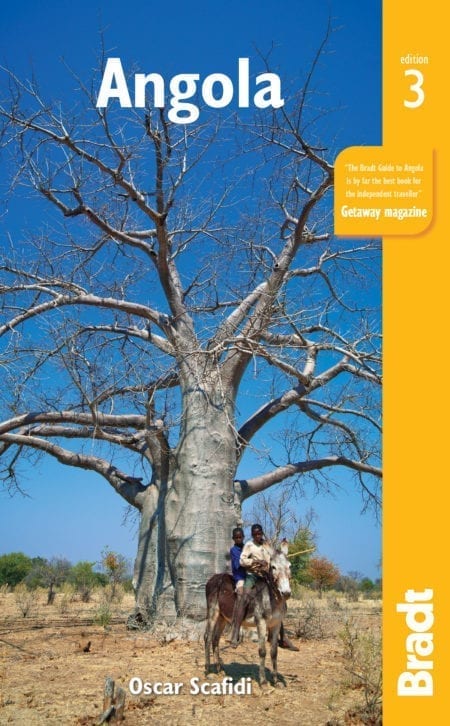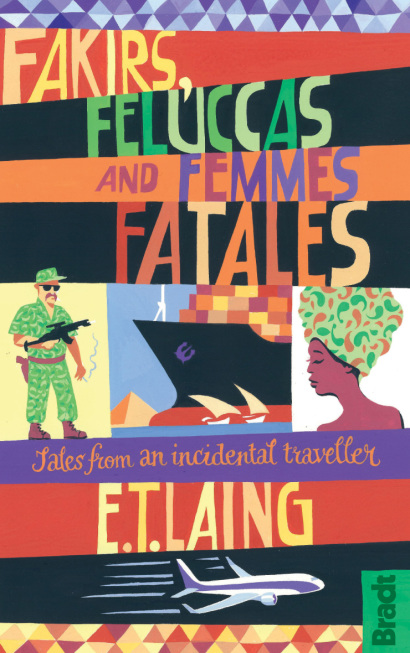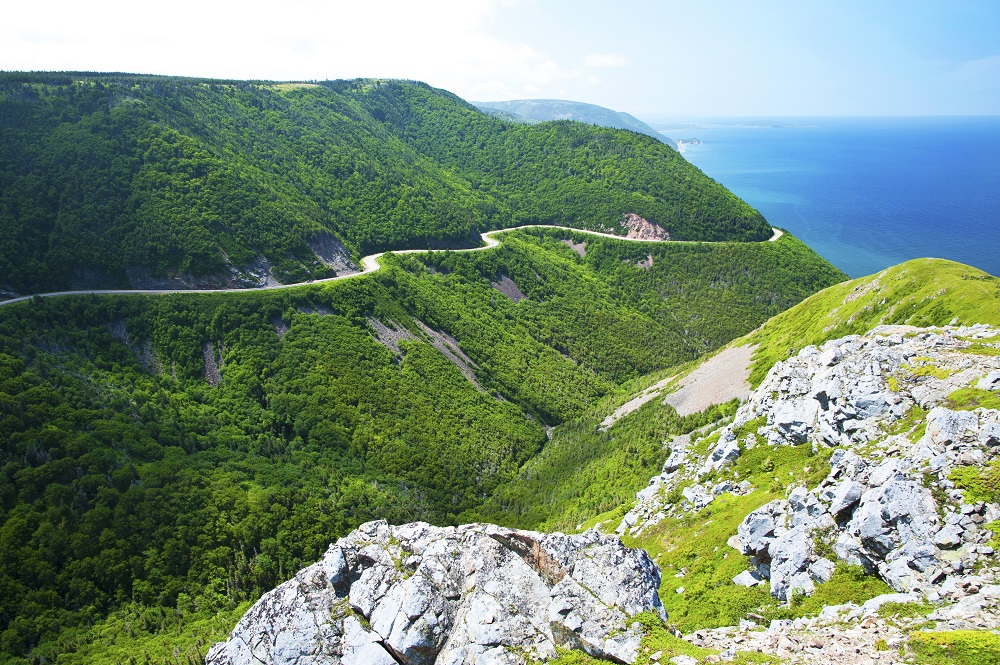There has never been an easier time to visit Angola. There is a spirit of optimism in the air as the new administration takes a more open approach to Angola’s engagement with the outside world.
Mike Stead, author of Angola: the Bradt Guide
Angola refuses to cling mawkishly to its past, having emerged from the shadow of 500 years of Portuguese rule and a long civil war; the prevailing spirit is one of confidence, pride and optimism. For the ultimate bragging rights, Angola is the tourist destination.
Business visitors are increasing but it’s still a very niche destination for tourists. Miles of remote beaches, tropical rainforests, burgeoning provincial capitals, and all manner of birds await. Race the waves in the Foz do Cunene–Baía dos Tigres beach run, see the grandeur of the Portuguese colonial pastel-pink building and travel deep into the desert to see the mysterious Tchitundo-Hulo rock paintings or take a day trip to the Kissama National Park a few hours south of Luanda.
Angola is keen to make up for lost time, and it would be a shame to miss out on its dramatic rebirth.
For more information, check out our guide to Angola:
Food and drink in Angola
Angolan cuisine has many influences including Portuguese, Mozambican and Brazilian. The main staples are rice and funje, a type of polenta made from corn or manioc flour. Along the wide coastal strip, fresh fish and seafood dominate the menus. Crayfish is usually billed as lobster on menus, but is tasty nonetheless. Prawns are more expensive than ‘lobster’ because they are often imported. River fish, especially a local tilapia called cacusso, is excellent served either fresh or dried. Beef is good, as is lamb when available – if not, try goat. Pork is less common. Vegetarians will have a hard time: although imported vegetables are plentiful in the supermarkets, they are not common side dishes in restaurants where funje, rice, beans and chips are usual. Pastries and sweet puddings are usually excellent for those who are not counting the calories.
Eating out
The ‘in’ place to eat and drink in Luanda is the Ilha, where there are many good restaurants and bars/nightclubs of international standard. The Ilha also has cheaper options which are popular with Angolans and could appeal to travellers on a lower budget. There are a small number of surprisingly good restaurants spread across Luanda, as well as lots of cheap anonymous local cafés ideal for snacks and a beer or a light meal. In the provinces, eating and drinking is an altogether more hit-and-miss affair. The best advice is to follow your instinct and head for places which have lots of customers and look reasonably clean and safe. If in doubt, head for the biggest hotel where food may be more recognisable but is not necessarily better cooked. Portions in restaurants tend to be large and it is perfectly acceptable to share a dish or to ask for a doggy bag (para levar) at the end of the meal, but expect a 250AOA bill for the tin foil container.
Fast food
Sadly, the days of just having KFF (Kentucky Fried Frango) are long gone. First came South Africa’s Hungry Lion, followed by KFC and then Pizza Hut. The only fast-food heavyweight we are still missing is McDonald’s, and international coffee shops selling fancy coffees at outrageous prices are still missing from the streets. Pubs in the traditional sense do not exist but most cafés serve alcoholic drinks.
Angolan dishes
Few menus in the lower price bands have English translations and none describe what you might actually be eating. You are unlikely to go far wrong, provided you remember that catatos are caterpillars, cabidela involves blood and gafanhotos are grasshoppers. The menu guide below will ensure that you choose your meal wisely. It lists the main Angolan dishes that you are likely to encounter as you travel around the provinces. Dishes may be prepared slightly differently and have different names around the country, so do not expect to find every delicacy everywhere.
Health and safety in Angola
Health
Most of the tropical (and not so tropical) nasties are present in Angola – hepatitis types A, B, C, measles, typhoid, polio, leprosy, amoebic infestations, cholera, yellow fever, malaria, tetanus, meningitis, trypanosomiasis, rabies, tuberculosis, Marburg and HIV/AIDS to name a few.
Immunisations
Sensible preparation will go a long way to ensuring your trip goes smoothly. Particularly for first-time visitors to Africa, this includes a visit to a travel clinic to discuss matters such as vaccinations and malaria prevention at least eight weeks before travel.
If you are on any medication prior to departure, or you have specific needs relating to a known medical condition (for instance, if you are allergic to bee stings or are prone to asthma), then you are strongly advised to bring any related drugs and devices with you. Take the informational leaflets as well, just in case you’re challenged.
Make sure all your immunisations are up to date, including tetanus, polio and diphtheria (now given as an all-in-one vaccine, Revaxis, that lasts for ten years), hepatitis A and possibly hepatitis B. The World Health Organization (WHO) recommends that the yellow-fever vaccine should be taken by those over nine months of age, although proof of vaccination is only officially required for those over one year of age.
Though advised for everyone, a pre-exposure rabies vaccination, involving three doses taken over a minimum of 21 days, is particularly important if you intend to have contact with animals, or are likely to be 24 hours away from medical help.
Malaria
The biggest health threat at lower altitudes is malaria. There is no vaccine against this mosquito-borne disease, but a variety of preventative drugs is available, including mefloquine, malarone and the antibiotic doxycycline.
The most suitable choice of drug varies depending on the individual and the country they are visiting, so visit your GP or a travel clinic for medical advice. If you will be spending a long time in Africa, and expect to visit remote areas, be aware that no preventative drug is 100% effective, so carry a cure too. Those who don’t make use of preventative drugs risk their life in a manner that is both foolish and unnecessary.
Safety
Crime and violence
Luanda’s reputation as a dangerous city is overstated. With about two firearms-related murders every day it is certainly not up there with Johannesburg or Nairobi, but it is much more dangerous than London, Lisbon or Paris. Once you get outside the capital city, you are looking at quite a safe country to visit.
The security situation and visitor safety in Angola has improved significantly since the end of the civil war – police numbers are up, there is a strong armed-police presence on the streets and mean-looking rapid-intervention teams known as ‘Ninjas’ patrol Luanda from time to time. There are also occasional high-profile security crackdowns.
However, the police need better pay to remove the temptation to accept bribes, and more needs to be done on training. Despite the improvements you do need to follow a strict security regime and not become complacent. The main cities and their suburbs are the most dangerous. The countryside is much safer.
The main drivers of crime and poor Safety in Angola are poverty and the unequal distribution of wealth, manifested by the poor conditions in which millions of people continue to live. The principal tools of the criminal’s trade are guns and knives – they are frequently brandished but fortunately they are very rarely used against foreigners.
A high proportion of the population owns a gun – a hangover from the civil war when the government armed the population of Luanda to help protect the city. A significant risk to visitors’ safety in Angola is mugging. You can reduce the risks to yourself by never walking anywhere at night; some embassies recommend you do not walk alone during the day.
Dressing down and keeping a low profile is always a good idea when travelling. Carrying valuables such as a laptop, camera or briefcase is an open invitation to trouble. Mobile phones are highly coveted and one of the main reasons for street crime. Never use a mobile phone on the street. Instead, switch it to silent/vibrate and return the call when safe to do so. Savvy travellers carry a second wallet with US$20 and an expired credit card or two which can be handed over to muggers.
If threatened with a gun or a knife, your only defence is to hand over your valuables. Your life is much more important than your wallet and mobile phone. There has been an increase in targeting expats recently, even in higher-end areas such as Talatona, and during daylight hours. It is very rare for these robberies to result in violence if you offer no resistance, although there is a significant risk of violence in places such as Luanda’s Ilha if you attempt to resist.
No-go areas
There are a few no-go areas in Luanda such as the Rocha Pinto area, and the serpentine road that leads up to the American Embassy is unsafe if on foot. People have also been robbed at gunpoint here while queuing in stationary traffic, so wind your windows up so you are less of a target: it’s easier to snatch a phone from your hands with minimal resistance!
Walking between the bars on the Ilha is not a good idea. Only walk or jog on the Marginal in the dark in the company of others, and at busy times. If you wander off into the poorer neighbourhoods you will attract unwelcome attention and are in any case very likely to get lost. As there are few taxis to help you find your way out, going there in the first place is a bad idea.
Female travellers
Levels of sexual violence are thought to be relatively high, but most incidents are between Angolans and are much more common in the suburbs than in the centre of Luanda. Drink spiking is on the increase, especially in some bars on the Ilha in Luanda. As a result, unaccompanied female travellers should certainly aim to stay at the more expensive hotels where security is better and room service can be ordered if necessary.
As most of the clients of the big hotels are single men, women will receive attention from bored expats, the vast majority of whom will simply want to share a bottle of wine over dinner. Outside Luanda, female travellers should aim to stay at the new hotels which are springing up in each of the provincial capitals.
Travellers with disabilities
The war maimed tens of thousands of combatants and land mines injured over 80,000 including innocent civilians and children. The NGO Handicap International estimates that persons with disabilities constitute 10% of the population.
There is no legislation in place to ensure that people with disabilities can access public or private facilities. Many buildings are not accessible – narrow doors and steep steps and lifts that do not work. Pavements are often nonexistent or are broken or peppered with open manholes, obstacles and puddles of water.
Public transport is not accessible. Only a few of the bigger hotels have access ramps. Having said all that, depending on your vigour, disability and desire, a visit to Angola could be very rewarding.
LGBTQ+ travellers
On 23 January 2019 Angola decriminalised homosexual acts, and introduced legislation prohibiting discrimination based on sexual orientation. Homosexuality is still not generally discussed openly. Parliament is currently debating a new draft penal code in which same-sex sexual activity is not criminalised, and the age of consent is set regardless of sexual orientation.
Given the strong influence of the Catholic Church in Angolan society, it is often surprising how tolerant certain sectors of society are with regards to the LGBTQ community. Titica, an Angolan transsexual performer, gained enormous popularity as the kuduru artist of the year 2011. Her third studio album, released in 2018, is titled Pra Quê Julgar? (Why Judge?). Titica’s music blasts out of the candongueiro collective taxis and she is a regular on television and radio.
She has gained the hearts of many Angolans and while her sexuality remains shrouded in mystery she has brought the taboo of sexuality to the fore. Despite her popularity she faces discrimination and there is a long way to go before LGBTQ issues are accepted in Angola. Indeed, the new Angolan Constitution of February 2010 rejected the idea of same-sex marriage.
Many Angolans find the public display of affection between same-sex couples distasteful at best, or downright repugnant at worst. Reactions could be extreme, including violence, so gay and lesbian travellers should avoid drawing attention to themselves.
Of course homosexuality exists in Angola: just head to the Ilha on 28 June for Pride Day! The Angolan Ministry of Justice and Human Rights also took a step in the right direction in June 2018 when they legalised the first LGBTQ rights NGO, called Associação Íris Angola. It is perfectly acceptable for two people of the same sex to share a twin room in a hotel but asking for a double is not recommended.
Travel and visas in Angola
Visas
Tourist visas were introduced for the first time in November 2007 and quickly gained a reputation as being one of the hardest tourist visas in Africa to get hold of. The original list of requirements was truly mind-boggling: health certificates, proof of residence, bank statements, letters from your employer, and of course the ever-elusive (certified) letter of invitation.
Thankfully, after 11 years of frustration, things suddenly changed. In March 2018 President Lourenço scrapped this whole process and introduced a tourist visa on arrival for citizens of 35 countries, later expanding it to 59 countries (including all EU nations). You still need to apply online and receive pre-approval before landing. However, traveller reports indicate that as long as you upload the correct documentation, an approval email is sent to you within 72 hours of your application. You then show this approval at your port of entry to collect and pay for your tourist visa.
At the time of writing (October 2018) the cost was US$120 or €120, with payment accepted in cash or by Visa. A full list of the eligible nationalities and required document scans can be found at smevisa.gov.ao.
The general requirements are scans of: passport, passport photo, yellow fever certificate, proof of accommodation, a recent bank statement showing at least US$200 per day you are visiting and a scan of your inbound and outbound ticket. Note that once the e-visa approval is issued, you have 30 days to arrive in Angola and collect your tourist visa (not 60 days, as it says on the website’s out-of-date terms and conditions).
Tourist visas must be used within 30 days of issue and are valid for multiple entries and for a stay of up to 30 days. They can generally be extended twice for a further 60 days total. Tourist visas do not allow the holder to work in Angola. If you plan to travel overland to or from the exclave of Cabinda, check carefully that your visa is a multiple-entry one, particularly if you were given a short-stay visa instead of a tourist visa.
Getting there and away
By air
The vast majority of visitors will fly into the international airport at Luanda. Flights into and out of Angola used to be fully booked and extremely expensive by international standards. Thankfully those days are behind us, as Angola’s economy opens up and there is an increase in competition on the routes. TAAG are working hard at making Luanda a transit hub for air traffic between southern Africa and South America, so do not be surprised if your flight in from Johannesburg is full of South Africans heading to Brazil. You should be fine booking flights and hotels through major online travel agents, but car hire is best done through local Angolan tour operators.
The airport is only 3km from Luanda, but it can take anywhere between 20 minutes and 90 minutes, depending on traffic, to reach the city centre. The airport is properly known as Aeroporto 4 de Fevereiro and its name commemorates the start of the armed struggle against Portuguese colonialism. It has two terminals: one each for international and domestic flights. If transferring between international and domestic flights, allow at least a couple of hours and seek the help of ground handling staff. The terminals are not physically connected and you will need to take a taxi. Beware of being overcharged: the drive is only about 5 minutes with no traffic!
By sea
Apart from the occasional cruise liner, passenger ships do not usually dock in Angolan ports. Private yachts and other small vessels would be treated with great suspicion and mooring facilities are poor to non-existent outside of the capital.
Getting around
By air
TAAG has come a long way since it was banned from EU airspace in 2007 due to safety concerns.
If you decide to fly, you are likely to buy a ticket with either TAAG or SonAir. There are smaller operators based out of airports such as Cabinda’s, but they have limited routes. Most Angolan domestic airlines are small and have very limited backup or support. Flights can be cancelled without notice, and can leave passengers stranded with no information or refund.
You can buy tickets for most of the domestic airlines from any travel agent in Luanda, however, it is easier to buy online at TAAG’s website. Alternatively, you can go to the domestic terminal at the airport and buy your ticket from one of the booths in the departures hall. The domestic terminal at Luanda airport was enlarged and refurbished in 2012. It now has VIP and CIP waiting rooms, shops, a café and limited parking (only 90 cars).
Allow 2 hours for check-in if you have bags. If you are flying with hand baggage only, you can print your boarding pass at home and breeze through security in about 15 minutes (assuming there is no queue). You will need your passport even for domestic flights.
By taxi
Until recently, Angola was one of the few countries in the world where there were no licensed taxis to pre-book or hail on the street. Things are improving slowly and there are now at least four licensed taxi companies – Afri-taxi, Morvic, Arvorense Táxi and Rogerius Táxi. Afri-taxi is the largest with a fleet of 300 vehicles, with 150 in Luanda and the rest distributed between Cabinda, Benguela and Lubango. It operates between 06.00 and 22.00.
All of Luanda’s taxi services are expensive and not that reliable. An easier option is to download the Allo Taxi app and book a collection (in the same way you would use Uber).
Unbooked reliable taxis are still in short supply and this makes life for the visitor incredibly difficult as walking in Luanda at night is generally considered to be unsafe, and great care should be taken elsewhere. Business visitors should ensure that their company or sponsor has arranged transport to and from the airport and will provide a car and driver for the duration of their visit.
Tourists will need to make arrangements in advance with their hotel or a local travel agency for airport transfers (not all hotels offer a transfer service), book an Allo Taxi collection, or take their chances that a taxi will be available at the airport. If not, they may need to take a potentially unsafe informal taxi or use collective minibuses.
To use an informal taxi, just ask around at the airport or hotel or even on the street. There will be plenty of offers but the vehicle is likely to be unlicensed, uninsured, unroadworthy, badly driven and expensive. Embassies recommend against using them. Personal safety is a concern and single females and anyone carrying valuables should not get into the car of a complete stranger. If possible use a driver recommended by your hotel, or contact a travel agency.
Informal taxis can be hired for short or long journeys. They tend to ply fixed routes and charge fixed prices, usually 100–200AOA. However, you’re likely to be charged more as a foreigner than other local passengers. If you are planning a longer journey and need a car to yourself, most Angolans know someone, who knows someone, who has a car and could drive you. Be sure to negotiate a rate in advance and stick to it. If you are staying in an expensive hotel you won’t be able to negotiate a cheap rate – so expect to pay US$100 upwards per day.
By car
First-time visitors to Luanda would be well advised not to hire a car on arrival. The roads are chaotic, traffic is very slow, there are few decent maps and even fewer road signs. Instead I strongly recommend you ask your hotel if they will provide an airport transfer service or contact one of the local travel agents.
By sea
There are grand plans to link the cities of Cabinda, Soyo, Nzeto, Dande, Luanda, Porto Amboim, Lobito, Benguela and Namibe by ferryboat. Whereas these are rather ambitious, there is already a 150-seater ferry service running between Luanda’s slave museum, Caposocca (where you get the boats to Mussulo) and the Port of Luanda. However, at the time of writing, there were only a few services per day, concentrated in the mornings, following the sinking of one of the ferries in June 2018.
Hitchhiking
On rural roads hitchhiking may be the only way to get around if you do not have your own vehicle. Your driver will ask for a gasosa (a payment) and bear in mind that very low driving standards make hitching a risky option, but not that unusual.
When to visit Angola
Climate
Angola’s climate varies according to latitude and altitude but the dominating influence is the cold Benguela Current which keeps temperatures bearable and rainfall down, at least on the coastal strip. In broad terms the country can be divided into four climatic zones: the north, where the rainfall is very heavy and the temperatures high; the central plateau, which is generally dry with average temperatures of 19°C, though much colder at night; the coastal plain which is cooler and dry; and finally the hot, dry Namibe Desert towards the south.
Calendar
March: Colourful Carnival
Wild costumes and even wilder dancing and music. Luanda’s three day carnival takes place just before Ash Wednesday each year. Carnival is also celebrated in most of the provincial capitals across the country. It’s the biggest cultural event in the country and has now shaken off its political shackles to become three days of wild entertainment. The music’s deafening and the colours wild. Despite the fun, Angolans take Carnival very seriously and its very competitive.
August: The Feast of our Lady of the Hill in Lubango
A month of celebrations in this pretty town high in the Central Highlands. Beauty pageant, fashion week, motor racing, candle-lit pilgrimage, agricultural show, sports and lots of eating. What’s not to like about Lubango at this time of year?
September: Festisumbe
The music festival of Angola that just gets bigger and better each year. The Festisumbe International Music Festival takes place in Sumbe, a couple of hours drive south of Luanda. Hotels are jam packed weeks in advance but it’s worth trying to book just to experience the best of Angolan music. The festival also attracts musicians from Portugal, Brazil, Cabo Verde and the occasional international stars such as UB40.
December: Running into the New Year
The Sao Silvestre is a 15km run through the streets of Luanda that takes place on 31 December each year. The roads are closed the day before and thousands of runners from around the globe including big names from Kenya and Ethiopia compete. There’s also a mini family run of around 4km.
Things to see and do in Angola
Cuito Cuanavale
One of Angola’s seminal confrontations occurred around the town of Cuito Cuanavale. In November 1987, after combat near the town of Mavinga, UNITA and the South African Defence Force (SADF) pushed a retreating FAPLA (the MPLA’s army) back to Cuito Cuanavale. FAPLA made the decision to hold Cuito Cuanavale at all costs. They received assistance from Cuba and the Soviet Union – including fighter aircraft, artillery, and thousands of land mines which were planted in a ring around the city. Cuito Cuanavale remained under siege for four months; during this time UNITA conducted offensives with infantry and tanks – however by the end of the siege, South Africa had withdrawn most of their military.
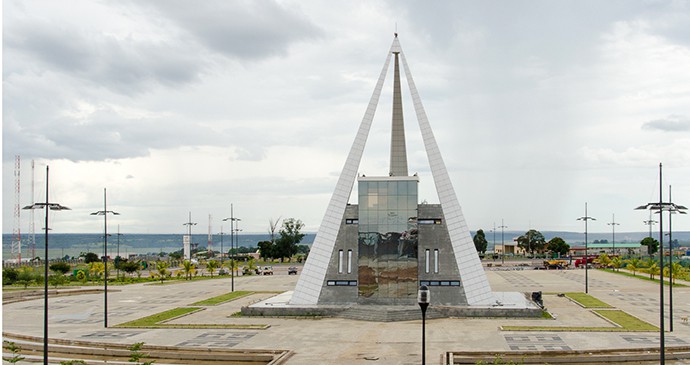
Both sides claimed victory, with UNITA and the SADF inflicting huge casualties on FAPLA. FAPLA and the Cubans maintained control of the city, however, which they claimed was their primary objective. The drain on resources at the Battle of Cuito Cuanavale caused the three foreign powers – Cuba, the Soviet Union, and South Africa – to withdraw their foreign troops from Angola. The ensuing negotiations, known as the Brazzaville Protocol, would set the stage for Angola’s elections in 1991.
Luanda
Situated about a quarter of the way down Angola’s Atlantic coast, Luanda is a vast and sprawling city that is difficult for visitors to get to grips with. It is a busy place where the gap between rich and poor is gaping. The population has grown exponentially since independence as millions of internally displaced people were attracted to the relative security of the capital and settled in musseques (shanty towns) near the centre and on the outskirts of town. In May 2014 Angola held its first census since independence, revealing a total population of 24.4 million people. This makes Luanda one of the most populous cities in Africa, and one of the five largest Lusophone cities in the world (the rest all being in Brazil). Since the end of the civil war in 2002, vast amounts of money have been spent to repair the city (along with the rest of the country), but much still needs to be done. The shiny new tower blocks owned by the oil companies stand in stark contrast to the modest houses and slums where the vast majority of Luandenses (Luandans) live. Even in the best parts of town, water, electricity and telephones can fail, but in the musseques these services are still very basic.
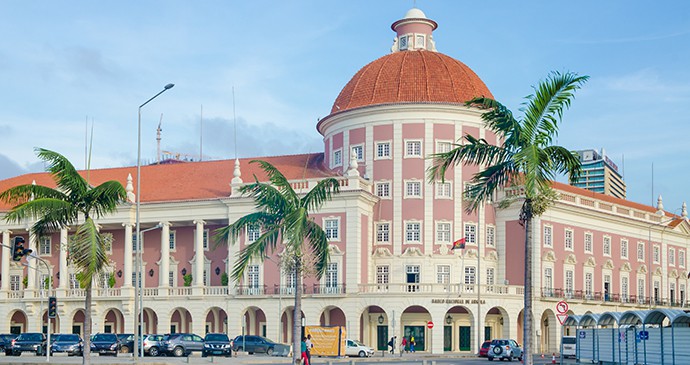
The various districts that make up the city each have their own function or atmosphere; the crescent-shaped Marginal road that follows the bay is the main focal point of the town and looks resplendent after a multi-million pound make-over, unveiled by the President in August 2012; the flat Baixa is the vibrant commercial and historic centre of Luanda with its old colonial buildings, narrow streets and small shops hidden away in back streets; the once very smart districts of Miramar, Alvalade and Maianga are altogether calmer and rise above the Baixa and are mainly residential suburbs and home to many expats; the Ilha is a long sand spit that creeps out to sea and forms the outer arm of the bay of Luanda. It’s here on the Ilha that residents and visitors come to enjoy the many bars, restaurants and nightclubs, and the city’s beach. South of the Ilha is a much larger sand spit, known as Mussulo. It is along this 35km peninsula that you will find some of the most exclusive beach bars of the capital, as well as the ocean-front residences of a number of ultra-wealthy Angolan families.
M’banza Congo
The small town of M’banza Congo sits high in the hills in the middle of nowhere, a tiny place that can be walked across in a mere 10 minutes. It’s steeped in the history of both central Africa and the Congo, and has played an important role in the region for centuries, as Portuguese missionaries and officials maintained economic ties with the Kongo kingdom during the Middle Ages. The town is one of the best places in Angola to visit just as a ‘tourist’. It could easily be mistaken for any in the Congo – some streetside bars even sell Primus beer, a staple of the two Congos immediately north of Angola. Ethnically the people of Zaire province and the DRC are one and the same, and French is widely spoken. Even the Portuguese spoken here has a distinctive sound as the letter X is pronounced as an S rather than a ‘shish’. Given the importance of oil in the region, it’s ironic that the town often suffers from petrol shortages.
Pungo Andongo
The Black Rocks are more or less midway between N’dalatando and Malanje. At the village of Cacuso, turn south and follow the road for about 45km. A few kilometres after Cacuso the road rises over the brow of a hill and the rocks of Pungo Andongo appear majestically in the far distance. Later, as you enter a small settlement, you will see signs for a visitors’ centre pointing to the left. Follow the signs and park in a natural cul-de-sac between the rocks. The visitors’ centre has long since disappeared but old concrete steps lead to the top of one of the rocks where there is an astonishing view of the countryside for miles around. The colossal blocks of stone that make up Pungo Andongo cover a rectangular area of about 12km x 6km and many of them rise 200m above the surrounding flat savanna.
Further to the east is a second group of rocks called Pedras Guingas. Many of the rocks have been described as looking like animals but at least one looks like an enormous circumcised phallus. Geologically, the rocks are a mystery: they are hard sedimentary conglomerates but are out of character with the surrounding topography. The growth of mosses and algae causes them to change colour during the seasons. Pungo Andongo is a place of myth and legend and served as capital of the Kingdom of Ndongo. The footprints of Rei (King) Ngola Kiluanji and Rainha (Queen) Ginga are said to be embedded in the rocks. Legend has it that while the queen was taking a bath in a brook at the foot of the rocks she was seen by soldiers. As she fled she left behind her footprints. Small impressions that, with a bit of imagination, could be footprints are protected by an ugly concrete shelter and can be found a short drive away though you will need to ask a local to show you the exact spot.
Serra da Leba
Some 36km southwest of Lubango, the excellent tarmac road that links Lubango with Namibe plunges 1,000m down the Serra da Leba Escarpment in a series of hairpin bends. Even if you are not travelling on to Namibe, it’s worth going to the top of the Leba Pass to get breathtaking views of the valley below.
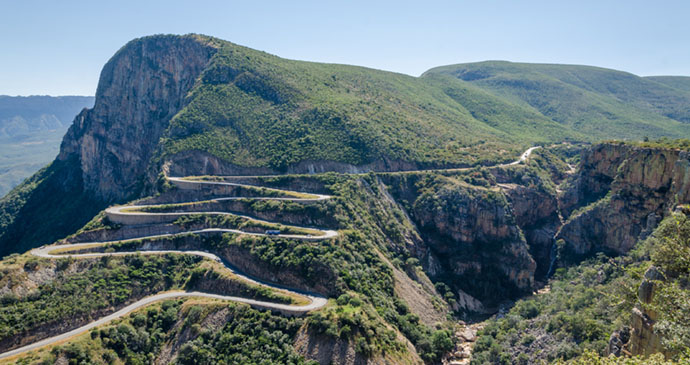
At the top, turn left immediately after the security barrier/toll station and head for the communication masts. At the end of the track is a viewpoint where you can see the steepest part of the road descend and disappear into the lush vegetation below. The road was built in 1970 and is widely regarded as the most spectacular and best constructed road in Angola.
Soyo
Soyo sits at the extreme northwest of Angola’s mainland at the mouth of the Congo River, barely above sea level and surrounded by waterways. Once a sleepy stretch of villages in the low sands along the banks of the river, Soyo is now an important oil town, with land reclamation making room for the influx of oil workers. During the 16th and 17th centuries, Soyo was called Sonyo and rose to become a wealthy and important trading port serving central Africa. Trade passed through its rival M’banza Congo first, then Sonyo. Rivalry between the two towns contributed to the eventual dissolution of the kingdom.
Tchitundo-Hulo Rock Paintings
This amazing set of prehistoric rock paintings necessitates a difficult and long 4×4 journey, about 137km west of Namibe close to Capolopopo. They are impossible to find without a guide and even then you may need to ask a local tribesman to help. The main set of paintings is spread out over a large steeply sloping granite rock face that is sacred to the Mucuisses people.
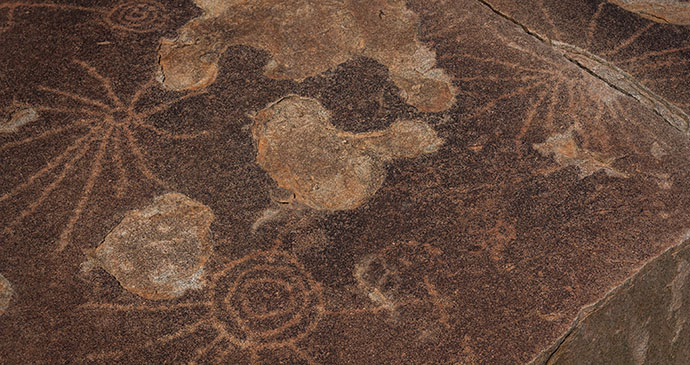
There are so many paintings that it is hard not to accidentally stand on them. Near the top of the hill, a good 20-minute climb in searing heat, there are more paintings on the roof of an eroded overhang. A second set of paintings is a few minutes’ drive away, on the roof of a rocky crag at the base of a hill (look out for the incongruous rusty old iron fence, put there in colonial times).
Tunda-Vala Gorge
Tunda-Vala (also known as Tundavala) is a breathtaking gorge cut out of the Chela Escarpment looking towards the town of Bibala in the north, and Lubango’s second must-see. Again, there’s no public transport so you’ll need to arrange an informal taxi to get you there. If you have your own car, getting to Tunda-Vala is easy; it’ll take about 3 hours for a round trip and you can do it in a normal car if driven carefully and if in the dry season. Tunda-Vala is about 17km northwest of the centre of town and you’ll need to leave Lubango on the main road passing the former Grande Hotel on your left heading up the gentle hill out of town towards Namibe. About 3.5km after the hotel, Tunda-Vala is signed to the right on a good tarmac road which passes first the N’gola brewery (5km after the turning) and then the Coca-Cola bottling plant 1km further on. Stop for the freshest and cheapest draught beer in Angola at the modest Pérola do Sul bar on the left-hand side of the road between the two bottling plants.
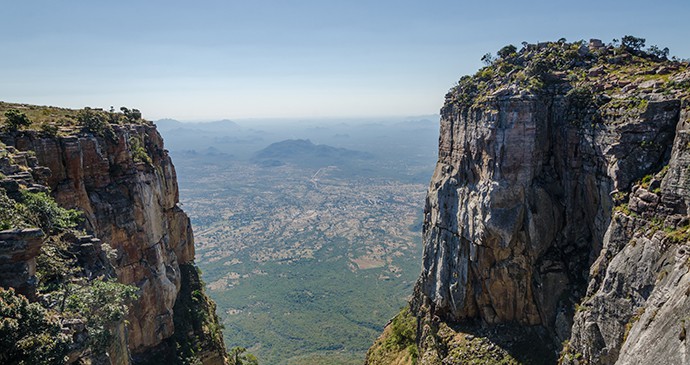
The road continues and, as it ascends, the tarmac disappears and the surface turns first into a gravel road then a dirt track, eventually opening up on to a wide high plain with a moonscape of weird-shaped rocks, many of which have been stacked precariously on top of each other by nature. Tunda-Vala is at the end of this track. A concrete viewing platform has been built at the point where a deep ravine slices into the edge of the vertical cliff. At the bottom of the cliff some 1,000m below is a wide green plateau punctuated with odd-shaped hills that stretches to the sea over 130km away at Namibe. To get a feel for the height of the cliff, toss a stone over the edge and count until it hits the bottom – usually about 8 seconds. Here, above the clouds, the air is clear and you may see the occasional eagle and monkey.
Kalandula Waterfalls
Depending on which source you check, the waterfalls on the river Lucala at Kalandula are either the second or third tallest in Africa. Irrespective of ranking, at 105m high and about 400m wide they are spectacular and well worth making the effort to visit them. For best effect, try to visit during the rainy season from September to April (the rains are heaviest between November and January). Until recently the closest place to stay was Malanje, some 85km to the east, but a good quality hotel has now opened directly overlooking the falls. If travelling by taxi from Malanje, allow 1 hour to reach the falls. Expect to pay around 5,000AOA. There is a small aerodrome close by but it is not served by scheduled flights. The falls are reasonably well signed in both directions from the main N’dalatando to Malanje road, but look out for the colonial name of ‘Duque de Bragança’ rather than Kalandula on the broken white signposts
The drive across the green and undulating countryside is depressing as the road passes through many settlements that were destroyed in the war. Heavy fighting broke out here in 1984 and Kalandula was occupied by UNITA several times and for long periods. Most of the town’s infrastructure was destroyed and the majority of the municipality’s population moved to the relative safety of Malanje, Cacuso and Luanda. Driving through the town of Kalandula is particularly sad with its bombed-out cinema, houses and shops. Fortunately the impressive mission church (Igreja de São Miguel) built in 1958, a few kilometres from the town, survived. Ask a villager to point out the way as it is worth a quick side trip, if only to see a Portuguese-style church incongruously transplanted into the middle of nowhere.
Related articles
Check out these classic coastal routes and steep mountain switchbacks
